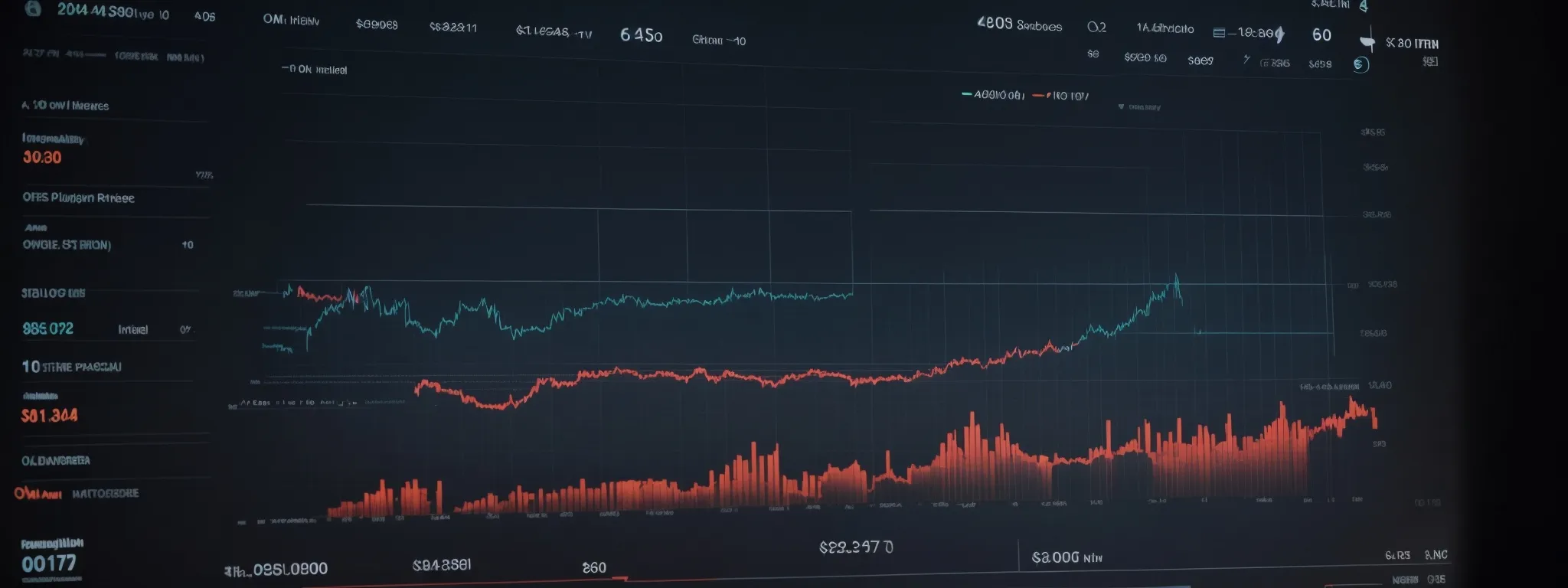How to Do Amazon SEO
Mastering Amazon SEO: The Essential Guide to Optimizing Your Listings Navigating the vast Amazon marketplace requires more than just an exemplary product; it demands a robust grasp […]
Mastering Amazon SEO: The Essential Guide to Optimizing Your Listings
Navigating the vast Amazon marketplace requires more than just an exemplary product; it demands a robust grasp of search engine optimization tailored specifically to Amazon’s unique algorithms.
Successful sellers know that mastery of Amazon SEO can skyrocket a product’s visibility and drive sales through the roof, turning searches into purchases and browsers into buyers.
To thrive on this platform, one must meticulously optimize product titles, craft compelling product descriptions, and execute strategic keyword research to stand out in a sea of competition.
Elevating listings with top-notch product images and leveraging the power of customer reviews are among the keystones of a sound Amazon SEO strategy.
Keep reading to uncover the insider techniques that will unlock the full sales potential of your Amazon listings.
Key Takeaways
- Amazon SEO Prioritizes Product-Centric Elements Such as Keyword-Optimized Titles and Detailed Product Descriptions
- Positive and Numerous Customer Reviews Are Influential in Amazon’s Search Ranking Algorithm
- High-Quality Images Adhering to Amazon’s Guidelines Are Essential for Enhancing Product Listings and Supporting SEO Efforts
- Backend Search Terms, While Invisible to Customers, Greatly Impact a Product’s Discoverability and Relevance
- Continuous Performance Metric Analysis Is Key to Refining Amazon SEO Strategies and Improving Product Rankings
Understanding the Fundamentals of Amazon SEO

In today’s cutthroat online marketplace, understanding and optimizing Amazon SEO has become a critical component for vendors aiming to enhance their visibility and drive sales.
Unlike traditional search engines that rely heavily on a myriad of ranking factors, Amazon’s search algorithm—whether it’s the established A9 or the evolving A10—prioritizes user-centric metrics that directly correlate with sales potential.
Sellers must approach Amazon optimization with a clear awareness of how it differs fundamentally from general search engine optimization strategies.
Highlighting product-centric elements such as keyword-optimized product titles to enriched product details, this guide unlocks the secrets to not only catching the discerning eye of the Amazon search engine but also ensuring customer experiences lead to higher conversion rates.
Grasping Why Amazon SEO Is Critical for Sales
At the core of Amazon SEO lies the imperative to drive organic traffic to one’s product page, ensuring that the offering stands out amidst a sea of competitors on the Amazon marketplace. Securing a high-ranking position on the SERP directly influences visibility and, by extension, the likelihood of purchase by inquisitive shoppers.
To neglect the tenets of Amazon optimization is to forgo a significant share of sales opportunities, as the vast majority of consumers rarely proceed beyond the initial search result page. Mastering Amazon SEO becomes not only a matter of visibility but an essential strategy to convert searchers into loyal customers:
| Amazon SEO Factor | Impact on Seller | Impact on Buyer |
|---|---|---|
| Product Title Optimization | Increases search relevance and visibility | Simplifies the product search experience |
| Detailed Product Descriptions | Enhances product understanding and SEO ranking | Provides comprehensive product information |
| User-Centric Keyword Selection | Targets relevant search queries effectively | Connects user intent with appropriate product listings |
| High-Quality Product Images | Improves engagement and dwell time | Facilitates a better assessment of the product’s features |
| Strategic Use of Bullet Points | Presents key benefits succinctly to improve skimmability | Allows quick grasping of product highlights and advantages |
Distinguishing Amazon SEO From Traditional Search Engines
The landscape of Amazon SEO is markedly different from the workings of traditional search engines like Google. Where the latter evaluates a range of ranking factors from site speed to backlinks, Amazon’s search algorithm zeroes in on performance metrics such as conversion rates and sales velocity that speak to a product’s market appeal.
This difference underscores the platform’s intent, with Amazon’s focus on optimizing the shopping experience and driving transactions, in contrast to Google’s broader goal of information retrieval. Successful sellers craft their Amazon SEO strategy to align with this unique e-commerce environment, tailoring efforts to bolster product visibility and purchase likelihood.
Crafting Winning Product Titles to Boost Discoverability

When it comes to Amazon’s vast marketplace, the product title serves as the gateway to a listing’s success, playing a critical role in engaging potential customers and maximizing product visibility.
Sellers must finesse the art of infusing titles with relevant keywords without sacrificing the distinctiveness of their brand.
This introductory section sets the stage for understanding the delicate interplay between compelling branding and search optimization.
It guides sellers to formulate titles that resonate with both the search algorithm and the customer, ensuring that the product stands out in a crowded market.
Engaging Customers With Keyword-Rich Titles
LinkGraph’s SEO services understand the art of striking a balance with product titles that are not only rich with relevant keywords but also spark curiosity and engagement among Amazon’s audience. By skilfully crafting product titles that are optimized for the A9 and A10 algorithms, sellers can significantly enhance their product visibility and attract more customers to their product detail pages.
The impact of a well-optimized product title extends far beyond its initial discovery on the Amazon SERP. Professionals at LinkGraph employ data-driven approaches, ensuring that titles are not only algorithm-friendly but also resonate with potential purchasers, fostering a robust connection from the moment they encounter the product listing, aimed squarely at improving click-through rates and conversion metrics.
Balancing Branding and SEO in Your Title Strategy
In the realm of Amazon optimization, LinkGraph’s SEO services deftly navigate the confluence of branding and keyword optimization. Excellence in this domain requires a meticulous synthesis, wherein the unique essence of a brand is communicated through titles enriched with relevant search terms, enhancing both recognition and searchability without compromising either.
This strategy, expertly implemented by professionals utilizing SearchAtlas SEO software, ensures that each product title is a testament to the brand’s narrative while adhering to the search engine’s algorithmic preferences. The result is a harmonized solution that not only elevates a product’s rank in Amazon searches but also fortifies brand identity in the consumer’s mind.
Enhancing Product Descriptions for Optimal Conversion

In the intricate dance of Amazon SEO, the narrative woven within the product descriptions holds immense power.
By mastering the ability to communicate the essence of a product eloquently, sellers not only captivate potential customers but also signal to Amazon’s sophisticated algorithms that their listings are relevant and valuable.
This section will elucidate the nuances of crafting descriptions that marry the art of persuasive storytelling with the science of keyword integration.
It will also explore the strategic deployment of bullet points as a means to distill the essence of offerings, ensuring that both search engine crawlers and human browsers are met with clear, SEO-enhanced highlights that channel toward informed and prompt purchase decisions.
Writing Descriptive Content That Sells and Ranks
LinkGraph’s SEO services recognize the pivotal role of a well-crafted product description in the realm of Amazon SEO. Professionals at LinkGraph ensure that each narrative is meticulously tuned for SEO, employing the right blend of keywords that not only satisfy Amazon’s ranking algorithm but also resonate with consumers, drawing them closer to a purchasing decision.
This meticulous attention to detail extends to the creation of content that captures the essence of the product while maintaining the clarity and precision required for SEO efficacy. Through SearchAtlas SEO software, Experts Are Able to Optimize product descriptions, seamlessly integrating essential keywords in a manner that feels natural and engaging to the potential buyer.
Leveraging Bullet Points for Clarity and SEO Benefit
LinkGraph’s SEO services elevate product listings by advising on the strategic use of bullet points, which distill complex product features into digestible highlights. This practice not only aids in clarity for potential buyers but also serves as a conduit for incorporating keywords that align with Amazon’s ranking preferences.
These bullet points, optimized meticulously via SearchAtlas SEO software, offer a dual advantage: cater to Amazon’s algorithmic demand for keyword relevance and provide customers with an at-a-glance synopsis of the product’s main benefits. A well-executed list of bullet points can be the deciding factor in transforming an interested visitor into a confirmed buyer:
| Element of Bullet Point Optimization | Advantages for SEO | Advantages for Customer Decision-Making |
|---|---|---|
| Keyword Integration | Enhances product discoverability on SERP | Aligns product features with customer search intent |
| Clarity and Precision | Communicates to search algorithms the relevance of the product | Facilitates swift understanding of product offering |
| Conciseness | Prevents keyword stuffing, which can negatively affect rankings | Respects customers’ time, allowing for rapid comprehension |
Conducting Thorough Keyword Research for Amazon Listings

Embarking on the journey of Amazon SEO necessitates a foundational step that can define the trajectory of a seller’s success: rigorous keyword research.
This crucial process sets the stage for the entire optimization effort, ensuring that listings resonate with the search terms potential customers are using.
Specialized tools and analytical techniques are at the core of unearthing those high-impact keywords, while a strategic examination of competitor listings can uncover gaps and opportunities for keyword inclusion.
This initiation into keyword research is not merely about finding words; it’s about discovering the pathways through which customers navigate the vast Amazon marketplace, thereby connecting products with the right audience to boost visibility and sales alike.
Utilizing Tools for Effective Keyword Discovery
LinkGraph’s SEO services prioritize the importance of in-depth keyword research for Amazon listings, leveraging powerful tools for this purpose. SearchAtlas SEO software stands as an instrumental asset in this respect, known for its comprehensive functionality that aids sellers in pinpointing the search terms paramount to their product’s visibility.
Among the diverse functionalities offered, SearchAtlas provides a methodical way of tracking and analyzing keywords that competitors might use, fostering an opportunity for sellers to refine their own keyword strategies. This vital insight paves the way for crafting product pages aligned with consumer search behavior, optimizing visibility in a marketplace brimming with alternatives:
| Keyword Research Component | SearchAtlas SEO Software Capability | Impact on Listing Optimization |
|---|---|---|
| Competitor Keyword Analysis | Delivers insights into the keyword landscape of similar products | Enables strategic keyword inclusion to bolster page ranking |
| Search Trend Data | Provides historical and current keyword performance metrics | Guides sellers in adapting SEO strategy to evolving market dynamics |
| Keyword Relevance Scoring | Gauges the effectiveness of specific keywords for a product category | Assists in prioritizing keyword integration based on potential impact |
The utilization of such sophisticated tools like SearchAtlas in LinkGraph’s SEO services ensures that the keyword selection process is grounded in data-driven decisions. By systematically employing these tools, sellers can enhance their SEO strategy, leading to optimized product listings that resonate with the target audience and search algorithms alike.
Analyzing Competitors for Keyword Opportunities
In the theater of Amazon marketplace competition, analyzing rivals’ listings provides invaluable insights for keyword discovery. Sellers leverage LinkGraph’s SEO services to dissect competitor strategies, allowing them to identify which keywords are being targeted effectively and reveal any potential niches yet to be capitalized upon.
Investigation of competitor keyword implementation offers a roadmap for refinement, prompting sellers to adapt and enhance their own listings. Monitoring the keyword strategies of successful competitors is not about imitation but about identifying opportunities for differentiation and seizing upon untapped potential:
| Keyword Analysis Focus | Benefit to Seller | Strategic Outcome |
|---|---|---|
| Identification of Competitor Keywords | Gains insight into successful keyword trends | Enables informed decision-making in keyword selection |
| Evaluation of Keyword Gaps | Discovers overlooked or underutilized terms | Positions listings to capture additional market segments |
| Analysis of Competitor Rankings | Understands the effectiveness of competitors’ keyword use | Guides the optimization of product page for improved SERP positioning |
With the savvy utilization of SearchAtlas SEO software under LinkGraph’s expertise, sellers can embark on a strategic offensive against competitors by honing in on high-performing keywords. These cultivated insights translate into an actionable plan that supports a product’s ascension up the Amazon ranks, catering to the nuanced searches of a discerning online audience.
Improving Product Visibility With High-Quality Images

In an environment where visual appeal can dictate the success of a product, high-quality images emerge as a fundamental component of a successful Amazon SEO approach.
Not only do they capture the attention of the shopper, but they also serve as a silent ambassador of the product’s quality, enhancing credibility and buyer confidence.
Well-chosen imagery supports SEO efforts by complementing textual elements and aligning with Amazon’s image guidelines, both of which are crucial for climbing the ranks within the Amazon search results.
LinkGraph’s SEO services meticulously underscore the significance of leveraging high-resolution images that adhere strictly to Amazon’s specifications to maximize product visibility and bolster overall ranking performance.
Using Images to Support Your SEO Efforts
LinkGraph’s SEO services emphasize the strategic role of high-resolution images in enhancing the Amazon product listing’s SEO potential. Professionals advocate for the integration of visuals that not only captivate the shopper but also align with Amazon’s image standards, thereby supporting the algorithm’s criteria for relevant and high-quality content.
Through the careful selection and optimization of product images, LinkGraph Ensures that visual content acts as a powerful ally in the SEO process. This tactic enriches the customer’s visual journey and signals the algorithm to recognize the listing’s relevance and authority, ultimately lifting the product in search rankings and drawing more buyers to the product page.
Adhering to Amazon’s Image Guidelines for Better Ranking
Adherence to Amazon’s strict image guidelines is not merely a formality; it is integral to enhancing a listing’s ranking. By ensuring images meet criteria such as a pure white background, sufficient lighting, and the focus on the product itself, LinkGraph’s SEO services assist sellers in avoiding common pitfalls that can dilute visibility and diminish ranking potential.
Moreover, LinkGraph emphasizes the strategic incorporation of images that can convey the product’s quality and usability, infusing them with the persuasive power to engage customers. Recognizing that compelling visuals are a core facet of Amazon’s search algorithm, LinkGraph’s professionals guide sellers in their quest to create listings that not only entice but also conform to the expected image standards for optimal SEO outcomes:
| Image Aspect | Amazon Guideline Compliance | SEO Benefit |
|---|---|---|
| Background | Must be pure white (RGB 255,255,255) | Enhances product focus, aiding visibility on search result pages |
| Product Coverage | Should fill 85% or more of the image frame | Ensures prominent display, attracting user attention and interaction |
| Image Quality | Requires high-resolution with zoom capabilities | Improves user experience and confidence, leading to higher CTRs and conversion rates |
Maximizing Your Use of Backend Search Terms

Discerning the right backend search terms constitutes a crucial facet of Amazon SEO—a subtle yet potent means to elevate a product’s visibility without cluttering the frontend customer-facing listing.
This section will delve into strategies for identifying backend keywords that drive notable traffic and the best practices for implementing these unseen, yet impactful terms.
Sellers armed with this knowledge will be poised to subtly yet significantly amplify their product’s discoverability and relevance to Amazon’s complex search algorithms.
Selecting Search Terms That Drive Traffic
In the dynamic realm of Amazon SEO, identifying potent backend search terms is akin to unveiling hidden conduits that connect products with relevant traffic streams. LinkGraph’s SEO services excel in pinpointing these search terms, harnessing exhaustive research and insightful analytics to uncover keywords that are instrumental in propelling a product’s rank and visibility within the Amazon ecosystem.
Strategic selection of search terms by LinkGraph’s seasoned professionals taps into the latent search behaviors of users, weaving in high-performing keywords that, while invisible to the customer, are highly regarded by the Amazon ranking algorithm. This targeted approach to backend keywords serves as the bedrock for constructing listings that enjoy an upsurge in organic discoverability and engagement.
Best Practices for Backend Keywords on Amazon
In the realm of Amazon search engine optimization, backend keywords are the unsung heroes that enhance product listings discreetly. LinkGraph’s SEO services underscore that synergy between chosen keywords and the core product attributes is pivotal: chosen search terms should reflect a product’s unique selling points while also aligning with the nuanced queries of potential customers.
- Curate a targeted list of backend keywords that harmonize with your product’s distinct features and benefits.
- Align backend keywords with those that customers naturally employ in their search queries.
- Avoid redundancy in keywords already present in the product title or bullet points to maximize the breadth of discoverability.
- Adhere to Amazon’s backend keyword guidelines, ensuring optimal use of allotted character limits.
Professionals at LinkGraph implement backend keyword best practices using the latest SearchAtlas SEO software tools, optimizing keyword placement to benefit search ranking without inundating the shopper-facing content. The aim is to bolster relevance within the Amazon A9 and A10 ranking algorithms, thus driving a higher volume of organic, interested traffic to listings.
Pricing Strategies to Complement Your Amazon SEO

Navigating the labyrinthine marketplace of Amazon requires a sophisticated blend of SEO savvy and keen business acumen, particularly when it comes to pricing strategy.
Sellers must strike a delicate balance by setting competitive prices that attract customers and boost search rankings, all while safeguarding profit margins.
The intricacies of Amazon’s search ranking algorithm take into account various factors, including product pricing, which undeniably influences visibility on the result page and can invariably affect conversion rates.
A well-conceived pricing strategy goes beyond mere figures; it’s a pivotal component of a comprehensive Amazon SEO strategy that entices both the algorithm and the discerning shopper.
Adjusting Prices Competitively While Maintaining Margins
In the competitive arena of Amazon’s marketplace, robust pricing strategies become a cornerstone for sustaining visibility and catalyzing sales, while safeguarding profit margins. LinkGraph’s SEO services provide expert guidance, enabling sellers to calibrate their pricing structures to remain attractive and competitive, thus driving organic traffic and enhancing search rankings, without eroding the profitability that is foundational to business success.
LinkGraph’s approach to Amazon SEO encompasses a nuanced understanding of the platform’s pricing sensitivities, ensuring that product offerings are positioned effectively within the market’s pricing spectrum. This strategic pricing is carefully aligned with SEO efforts, such as keyword optimization and content strategy, to coalesce into a holistic Amazon presence that appeals directly to the algorithm’s preference for competitively priced products, fostering an increase in conversion rates and overall sales performance.
Impact of Pricing on SEO and Conversion Rates
Understanding the impact of pricing on Amazon SEO and conversion rates is crucial for sellers looking to optimize their online presence. An item’s price point directly influences its competitive edge on the search results page, potentially affecting its click-through rate (CTR) and ability to convert browsers into buyers. Therefore, a thoughtful pricing strategy can be as important as keyword optimization and high-quality images in determining a product’s search ranking and sales success.
LinkGraph’s SEO services highlight that while competitive pricing can increase a product’s appeal, it must also be balanced with profitability to ensure sustainable business growth. Strategically set prices not only encourage higher search result placement but also play a pivotal role in improving conversion rates by appealing to cost-conscious consumers ready to make a purchase. This approach reaffirms that effective SEO is not singularly about visibility but is integrally connected to all facets of the customer journey, including perceived value:
| Pricing Factor | SEO Impact | Conversion Rate Influence |
|---|---|---|
| Competitive Price Points | Boosts product ranking by aligning with consumer search for value deals | Encourages shoppers to choose a product when price is a determining factor |
| Strategic Pricing Adjustments | Enhances visibility through dynamic responses to market demands | Leverages psychological pricing techniques to increase purchase likelihood |
| Value Proposition Clarity | Signals product’s market position and relevance to search algorithms | Converts interest to sales by clearly communicating the product’s worth |
Encouraging Customer Reviews to Enhance SEO Effectiveness

In an online marketplace where customer feedback can make or break a seller’s success, Amazon SEO must consider the influential role of customer reviews.
These testimonials not only build trust and credibility with potential buyers but also serve as a significant factor in the search ranking algorithm.
A concerted effort to generate authentic reviews can lead to improved ranking positions and elevated visibility for product listings.
Understanding the intricate connection between positive customer feedback and enhanced Amazon search results is paramount for sellers aiming to maximize the SEO potential of their products.
This subsection delves into effective strategies for accumulating genuine reviews and elucidates their direct impact on search result prominence.
Generating Authentic Reviews for Improved Rankings
In the intricate landscape of Amazon SEO, the accumulation of genuine customer reviews stands as a vital influence on product ranking. LinkGraph’s white-label SEO services provide strategies for sellers to actively and ethically encourage customers to share their experiences, thereby improving the credibility and visibility of the product listings, which in turn can lead to a higher ranking position on the Amazon SERP.
LinkGraph recognizes that each authentic review serves as a testament to a product’s quality and customer satisfaction, elements that Amazon’s ranking algorithm favors. By fostering an environment that welcomes and facilitates customer feedback, LinkGraph’s SEO services help sellers elevate their product’s reputation and search ranking, ultimately driving increased organic traffic to their listings.
The Connection Between Reviews and Amazon Search Results
The significance of customer reviews extends beyond trust-building—their presence profoundly impacts Amazon’s search results. Products backed by a substantial number of positive reviews tend to rise in the ranks, as the Amazon algorithm interprets high review volumes as an indicator of product popularity and consumer satisfaction, both critical components influencing search rankings.
Consistent accumulation of positive reviews signals to the algorithm an ongoing satisfaction with the product, further reinforcing the product’s standing in search results and compounding its visibility over time:
- High review counts enhance algorithmic perception of product desirability, boosting SERP placement.
- Positive reviews contribute to sustained rank improvement, as search results reflect customer approval.
- Continuous growth in reviews indicates constant relevance and customer interest to Amazon’s ranking system.
Thus, LinkGraph’s SEO services emphasize the strategic importance of reviews in shaping Amazon SEO outcomes. Active engagement with customers to garner feedback can serve as a powerful lever, influencing not only the immediate consumer but also affecting the algorithms and their effect on product page performance.
Optimizing for Amazon’s A10 Algorithm: A Deep Dive

Amazon’s e-commerce dominance necessitates an intricate understanding of its underlying search framework, specifically the nuances of its A10 algorithm.
For sellers eager to stay at the forefront, mastering the A10’s intricate mechanics is not just an advantage but a prerequisite for optimal SEO.
This deep dive will elucidate the intricacies of the A10 algorithm and equip sellers with actionable strategies tailored to navigate and leverage its complexities.
This exploration, critical to any Amazon optimization effort, will guide sellers in fortifying their listing strategies to withstand and capitalize on the ever-evolving landscape dictated by A10’s sophisticated algorithmic changes.
Understanding the Mechanics of A10 for Better SEO
To navigate the dynamic terrain of Amazon’s marketplace, sellers must acquaint themselves with the A10 algorithm’s unique characteristics. It’s imperative to recognize that, unlike its predecessor the A9 algorithm, A10 places greater emphasis on consumer behavior and the quality of traffic that each listing receives. This advanced focus demands a refined approach to SEO, necessitating Meticulous Optimization that transcends mere keyword saturation and delves into enhancing the customer experience.
For an SEO strategy to thrive under the A10 algorithm, LinkGraph’s SEO services emphasize the integration of high-retention actions such as prolonged browsing and repeated purchases into the ranking equation. The A10 algorithm’s intricate design prioritizes listings that demonstrate a strong connection between customer engagement and product relevance, placing the onus on sellers to ensure their listings are tailored to foster both immediate appeal and sustained interactions.
Strategies for Adapting to A10 Algorithm Changes
Adapting to the nuances of Amazon’s A10 algorithm requires sellers to institute a series of strategic measures that align closely with the algorithm’s customer-focused ranking criteria. One pivotal strategy is to enhance the buyer’s journey through high-quality content, such as detailed product descriptions and images, which are designed to improve engagement and reduce bounce rates. Another essential tactic involves optimizing all facets of a product listing, from backend keywords to pricing strategies, to foster both high page rankings and excellent customer experiences.
Aiming to outperform competitors under the A10’s vigilant eye demands that sellers embrace comprehensive SEO techniques that amplify a product’s presence and appeal. Proven strategies by LinkGraph’s SEO services involve leveraging customer reviews for social proof and incorporating data-driven keyword optimization to cater to the algorithm’s preference for relevancy and user satisfaction:
- Strategize around keyword placement in titles and bullet points to meet the A10 algorithm’s emphasis on relevancy.
- Encourage and manage customer reviews to contribute to the algorithm’s perception of product popularity.
- Consistent analysis and optimization of pricing to appeal to the A10’s attention toward customer value.
Measuring the Success of Your Amazon SEO Strategies

In the quest to optimize product listings on Amazon’s expansive marketplace, gauging the effectiveness of applied SEO tactics is vital for sellers determined to escalate their products to the pinnacle of search rankings.
Continuous assessment and refinement of SEO strategies are fundamental steps within a sophisticated Amazon SEO toolkit.
This endeavor necessitates a focus on pertinent performance metrics and an adept use of Amazon’s own analytic resources, thus enabling sellers to distill actionable insights and continually hone their optimization practices.
The upcoming discourse on ‘Tracking Performance Metrics That Matter’ and ‘Utilizing Amazon’s Analytics Tools to Refine SEO Practice’ aims to furnish sellers with the knowledge required to measure, evaluate, and amplify the success of their SEO efforts, ensuring they stay ahead in the competitive arena of Amazon SEO.
Tracking Performance Metrics That Matter
In the labyrinth of Amazon’s digital marketplace, assessing the effectiveness of SEO strategies is emblematic of a seller’s commitment to mastery. Scrutinizing performance metrics is a delicate art, one that LinkGraph’s SEO services navigate with astute proficiency, ensuring that key indicators such as click-through rates (CTR), conversion rates, and overall sales figures serve as compass points guiding optimization endeavors.
LinkGraph counsels on the value of these metrics as tangible evidence of an Amazon SEO campaign’s health and trajectory. Capturing data-driven snapshots of performance allows for incisive adjustments to SEO tactics, making the difference between languishing in obscurity and rising to the pinnacle of Amazon’s search result pages:
- Examining CTR as a gauge of title and keyword efficacy.
- Tracking conversion rates to optimize product descriptions and pricing strategies.
- Analyzing sales trends to refine backend keywords and image quality.
Vital to this metrics-focused approach is LinkGraph’s adept use of SearchAtlas SEO software, which streamlines the analytics process. The service equips clients with insights that are not just comprehensive but actionable, translating numbers into steps forward, illuminating the path to optimal product ranking and the zenith of Amazon SEO success.
Utilizing Amazon’s Analytics Tools to Refine SEO Practice
LinkGraph’s SEO services integrate Amazon’s analytics tools to enhance sellers’ understanding of their SEO performance, utilizing granular data to inform strategic adjustments. These tools allow for the meticulous tracking of user behaviors, highlighting the efficacy of keywords and the resonance of content with the target audience, thus empowering continuous refinement in alignment with the A10 algorithm’s evolving criteria.
By applying the insights gleaned from Amazon’s analytics, professionals at LinkGraph facilitate a data-driven approach to SEO. They prioritize modifications that hold the greatest potential for increasing product visibility and customer engagement, ultimately striving to achieve a prime position on Amazon’s search engine result page, all while maximizing sales growth and customer satisfaction.
Conclusion
Mastering Amazon SEO is critical for sellers to enhance their product visibility, drive sales, and succeed within the competitive Amazon marketplace.
By tailoring optimization strategies to align with Amazon’s unique algorithms, such as A9 and A10, sellers can significantly boost their product rankings on the SERP.
Key elements like crafting keyword-rich product titles, detailed descriptions, high-quality images, effective use of bullet points, and strategic backend keywords are all integral to achieving visibility and attracting potential buyers.
Employing in-depth keyword research and adhering to Amazon’s image guidelines further support sellers in improving their listings.
Moreover, a competitive pricing strategy complements SEO efforts, helping to improve conversion rates.
Actively encouraging customer reviews can also amplify a listing’s credibility and search ranking.
With a comprehensive understanding of the A10 algorithm changes, sellers can refine their approaches to cater to consumer behavior and enhance the quality of traffic their listings receive.
Measuring SEO success through performance metrics and Amazon’s analytic tools allows for the continuous refinement of strategies, optimizing listings to meet Amazon’s dynamic search criteria and consumer demands.
Overall, sellers who master Amazon SEO gain a significant advantage in connecting their products with the right audience and scaling their presence in the e-commerce space.














































































